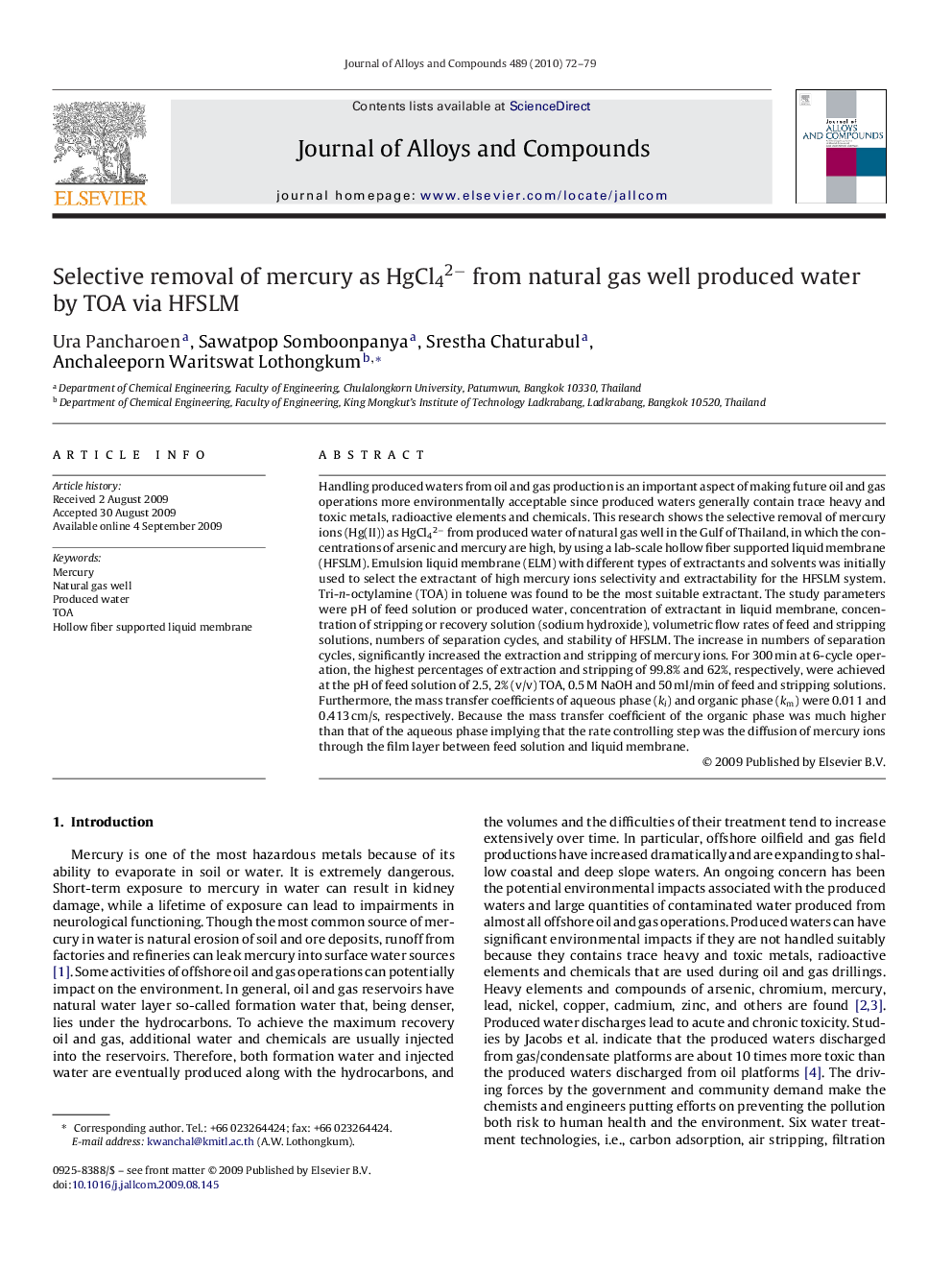| کد مقاله | کد نشریه | سال انتشار | مقاله انگلیسی | نسخه تمام متن |
|---|---|---|---|---|
| 1621200 | 1005745 | 2010 | 8 صفحه PDF | دانلود رایگان |

Handling produced waters from oil and gas production is an important aspect of making future oil and gas operations more environmentally acceptable since produced waters generally contain trace heavy and toxic metals, radioactive elements and chemicals. This research shows the selective removal of mercury ions (Hg(II)) as HgCl42− from produced water of natural gas well in the Gulf of Thailand, in which the concentrations of arsenic and mercury are high, by using a lab-scale hollow fiber supported liquid membrane (HFSLM). Emulsion liquid membrane (ELM) with different types of extractants and solvents was initially used to select the extractant of high mercury ions selectivity and extractability for the HFSLM system. Tri-n-octylamine (TOA) in toluene was found to be the most suitable extractant. The study parameters were pH of feed solution or produced water, concentration of extractant in liquid membrane, concentration of stripping or recovery solution (sodium hydroxide), volumetric flow rates of feed and stripping solutions, numbers of separation cycles, and stability of HFSLM. The increase in numbers of separation cycles, significantly increased the extraction and stripping of mercury ions. For 300 min at 6-cycle operation, the highest percentages of extraction and stripping of 99.8% and 62%, respectively, were achieved at the pH of feed solution of 2.5, 2% (v/v) TOA, 0.5 M NaOH and 50 ml/min of feed and stripping solutions. Furthermore, the mass transfer coefficients of aqueous phase (ki) and organic phase (km) were 0.011 and 0.413 cm/s, respectively. Because the mass transfer coefficient of the organic phase was much higher than that of the aqueous phase implying that the rate controlling step was the diffusion of mercury ions through the film layer between feed solution and liquid membrane.
Journal: Journal of Alloys and Compounds - Volume 489, Issue 1, 7 January 2010, Pages 72–79